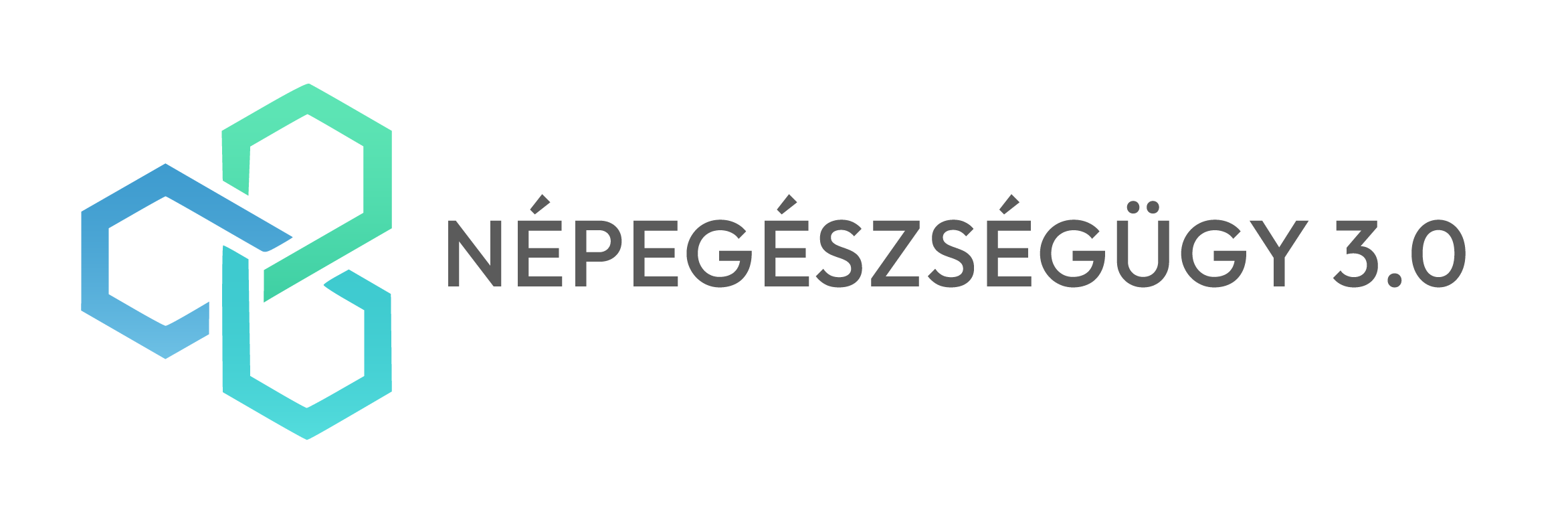Inequalities in hospice care at home in Hungary - results of the first district-level exploratory analysis of administrative data
Abstract
INTRODUCTION: Lack of information on hospice care at home in Hungary is evident. In the absence of performance measurement in our social policy, such as health and social care systems, means that the extent to which hospice patients and their families needs are met in Hungary remains unexplored. The aim of our research is to exploit and reach the full analytical potential of administrative data on hospice care at home to gain a more accurate picture of how the care system is performing today and how it contributes to the ultimate goal of improving the quality of life of progressive chronic patients and their families.
METHODOLOGY: Our analysis is based on the financial data of the National Health Insurance Fund, aggregated at district level in 2018. Our output variables are the number of patients reported in hospice care at home by district, looking at nominal and per 10,000 inhabitants, and the proportion of those who lived a long time after discharge. We considered a patient to live long time if a care event was reported in the calendar year 2018 for a patient who was still alive in June 2019, notably more 6-18 months after the reference period. These cases are considered in our study as misuse of the service.
RESULTS: In 2018, a population of 8 million lived in districts where admission ratio to hospice care at home was less than 10 patients per 10,000 inhabitants. Number of patients per 10.000 inhabitants is less than 5 in 86 districts. 37.0% of the population, 3,652,756 people live in these districts, where less than 4% of those who died was admitted to hospice care at home. From 183 districts with at least 1 hospice care at home care event, 18 had a rate above 50% with patients still alive long after the reference period, which we considered as misuse. Our results show that there was no hospice care at home event in all districts of the country, there were significant inequalities in access to care by place of residence, and the exploratory analysis already reveals dysfunctionality and misuse of care.
CONCLUSIONS: The initial results of the exploratory analysis cannot, of course, give an accurate picture of the quality and access to care, but they can demonstrate and illustrate why either national or county-level data analysis can effectively conceal major inequalities. Our paper argues for the approach presented here to be taken to enable governance and policy makers to plan interventions effectively and measure their impact routinely.
References
Arah, O.A. et al. (2006) ‘A conceptual framework for the OECD Health Care Quality Indicators Project’, International Journal for Quality in Health Care, 18(suppl_1), pp. 5–13. https://doi.org/10.1093/intqhc/mzl024.
Arias-Casais, N. et al. (2019) EAPC Atlas of Palliative Care in Europe 2019. https://dadun.unav.edu/handle/10171/56787.
Busa, Cs., Pozsgai, E., Zeller, J., & Csikós, Á. (2022). Who should talk with patients about their end-of-life care wishes? A nationwide survey of the Hungarian population. Scandinavian Journal of Primary Health Care 40, 157–164. https://doi.org/10.1080/02813432.2022.2057055
Connelly, R., Playford, C.J., Gayle, V., & Dibben, C. (2016). The role of administrative data in the big data revolution in social science research. Social Science Research, Special issue on Big Data in the Social Sciences 59, 1–12. https://doi.org/10.1016/j.ssresearch.2016.04.015
Chang W, Cheng J, Allaire J, Sievert C, Schloerke B, Xie Y, Allen J, McPherson J, Dipert A, Borges B (2024). shiny: Web Application Framework for R. R package version 1.8.1.9000, https://github.com/rstudio/shiny, https://shiny.posit.co/
De Roo, M.L., Leemans, K., Claessen, S.J.J., Cohen, J., Pasman, H.R.W., Deliens, L., & Francke, A.L. (2013). Quality Indicators for Palliative Care: Update of a Systematic Review. Journal of Pain and Symptom Management 46, 556–572. https://doi.org/10.1016/j.jpainsymman.2012.09.013
Donabedian, A. (1966). Evaluating the Quality of Medical Care. The Milbank Memorial Fund Quarterly Vol. 44, 166–203.
Donabedian, A. (1988). The Quality of Care: How Can It Be Assessed? JAMA 260, 1743. https://doi.org/10.1001/jama.1988.03410120089033
Finkelstein, E.A. et al. (2021) ‘Cross Country Comparison of Expert Assessments of the Quality of Death and Dying 2021’, Journal of Pain and Symptom Management, 0(0). https://doi.org/10.1016/j.jpainsymman.2021.12.015.
Gaál, P., Szigeti, Sz., Evetovits, T., & Lindelsz, F. (2012). Az egészségügyi rendszerek teljesítménymérésének koncepcionális kérdései. Egészségügyi Gazdasági Szemle 50. évfolyam, 7-15.
Horváth, O., Rácz, K., Jakus, N., Kegye, A., & Hegedűs, K. (2022.) A hospice-palliatív ellátás hatékony integrálása a hazai onkológiai és családorvosi gyakorlatba. Orvosi Hetilap 163, 1520–1527. https://doi.org/10.1556/650.2022.32561
Institute of Medicine (2001) Crossing the Quality Chasm: A New Health System for the 21st Century. Washington (DC): National Academies Press (US). http://www.ncbi.nlm.nih.gov/books/NBK222274/.
Levesque, J.-F., Harris, M.F. and Russell, G. (2013) ‘Patient-centred access to health care: conceptualising access at the interface of health systems and populations’, International Journal for Equity in Health, 12, p. 18. https://doi.org/10.1186/1475-9276-12-18.
OECD (2023) Time for Better Care at the End of Life. Paris: Organisation for Economic Co-operation and Development. https://www.oecd-ilibrary.org/social-issues-migration-health/time-for-better-care-at-the-end-of-life_722b927a-en.
Pask, S., Davies, Joanna M, Mohamed, A., Leniz, J., Chambers, R.L., McFarlane, P., Bone, A.E., Barclay, S., Higginson, I.J., Sleeman, K.E., & Murtagh, F.E. (2022). Better End of Life 2022 Mind the gaps: understanding and improving out-of-hours care for people with advanced illness and their informal carers. Research report. Marie Curie, London UK.
Pasman, H.R.W., Brandt, H.E., Deliens, L., & Francke, A.L. (2009). Quality Indicators for Palliative Care: A Systematic Review. Journal of Pain and Symptom Management 38, 145-156.e21. https://doi.org/10.1016/j.jpainsymman.2008.07.008
Szigeti, Sz., Gaál, P., Mihalicza, P., Evetovits, T., & Pusztai, Zs. (2012). Javaslatok a teljesítményértékelési rendszer intézményesítésére a magyar egészségpolitika intézményrendszerében. Egészségügyi Gazdasági Szemle 50. évfolyam, 31–34.
Szöllősi, M. (2022). Adatfejlesztés a teljesítménymérés szolgálatában. Előadás XVI. IME Országos Egészség-gazdaságtani Konferencia, Budapest, 2022.06.29.
Szöllősi M., 2023. Könyvismertetés: Mire tanít ma a palliatív ellátás? Multidiszciplináris Egészség és Jóllét 1, 100–106. https://doi.org/10.58701/mej.12870
Szöllősi, M., Tátrai, A., 2023. Adminisztratív adatok elemzésének tapasztalatai a hospice ellátásában. Előadás Válságról válságra, Magyar Szociológiai Társaság Vándorgyűlése, Budapest, 2023. november 18. https://drive.google.com/file/d/1rl8lsiFas8vfL6hn7ZrJgL4B5PV2REpA/view
Tátrai, A. (2022). Magyarország szegénységi térképe. in Kolosi, T., Szelényi, I., Tóth, I. Gy. (szerk. 2022): Társadalmi Riport 2022. Budapest: TÁRKI
Tennekes, M. (2018). tmap: Thematic Maps in R. J. Stat. Soft. 84. https://doi.org/10.18637/jss.v084.i06
Wickham, H., Averick, M., Bryan, J., Chang, W., McGowan, L., François, R., Grolemund, G., Hayes, A., Henry, L., Hester, J., Kuhn, M., Pedersen, T., Miller, E., Bache, S., Müller, K., Ooms, J., Robinson, D., Seidel, D., Spinu, V., Takahashi, K., Vaughan, D., Wilke, C., Woo, K., & Yutani, H. (2019). Welcome to the Tidyverse. JOSS 4, 1686. https://doi.org/10.21105/joss.01686
World Health Organization (2020) Assessing national capacity for the prevention and control of noncommunicable diseases: report of the 2019 global survey. World Health Organization, Geneva. https://iris.who.int/bitstream/handle/10665/331452/9789240002319-eng.pdf?sequence=1.
World Health Organization (2022) Health system performance assessment: a framework for policy analysis. World Health Organization. Available at: https://apps.who.int/iris/handle/10665/352686.
World Health Organization (2023) Assessing national capacity for the prevention and control of noncommunicable diseases: report of the 2021 global survey. World Health Organization, Geneva. https://iris.who.int/bitstream/handle/10665/370423/9789240071698-eng.pdf?sequence=1.
/1999. (III. 3.) Korm. rendelet az egészségügyi szolgáltatások Egészségbiztosítási Alapból történő finanszírozásának részletes szabályairól https://net.jogtar.hu/jogszabaly?docid=99900043.kor Hozzáférés: 2024.04.08.
/2022. (XII. 30.) BM rendelet a háziorvosok és fogorvosok indikátor alapú teljesítményértékeléséről https://njt.hu/jogszabaly/2022-83-20-0A Hozzáférés: 2023.01.01.
https://hospice.hu/docu/Osszefoglalas_a_2020_evi_hospice_betegellatasrol.pdf. Hozzáférés: 2023.01.12.
https://hospice.hu/docu/Osszefoglalas_a_2021_evi_hospice_betegellatasrol.pdf. Hozzáférés: 2023.04.05.
https://hospice.hu/docu/Osszefoglalas_a_2022_evi_hospice_betegellatasrol.pdf. Hozzáférés: 2024.01.31.
https://www.ksh.hu/stadat_files/nep/hu/nep0010.html Hozzáférés: 2023.01.11.
https://mertek.okfo.gov.hu Hozzáférés: 2023.01.13.
https://neak.gov.hu/felso_menu/lakossagnak/szerzodott_szolgaltatok/otthoni_hospice. Hozzáférés: 2023.01.12.
http://neak.gov.hu/felso_menu/szakmai_oldalak/publikus_forgalmi_adatok/gyogyito_megelozo_forgalmi_adat Hozzáférés: 2024.04.08.












